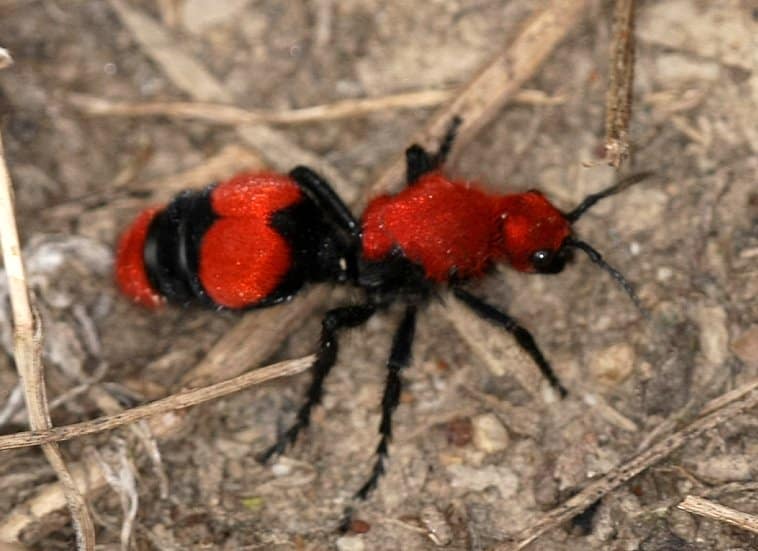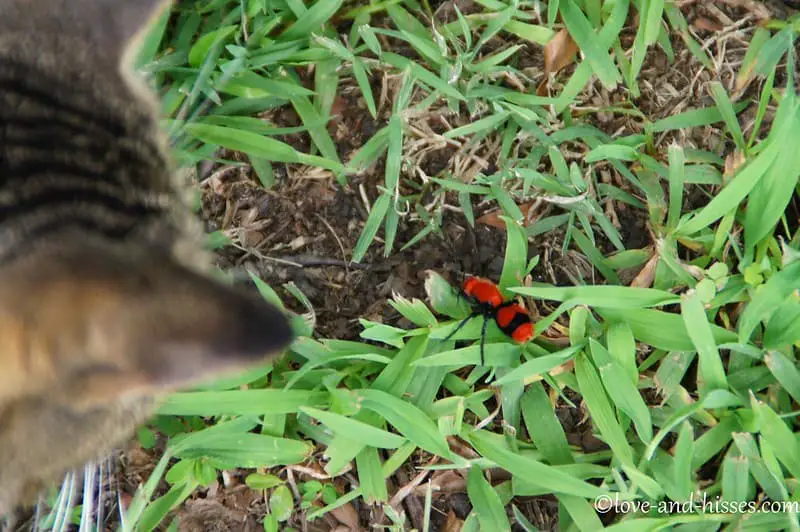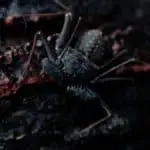Keeping velvet ants is very simple. Here’s a quick velvet ants care guide that can help you to take care of velvet ants easily.
House the velvet ants in a tank filled with sand. Feed them with syrup water. Keep the tank dry and ventilated. Give them 8-12 hours of light per day.
Introduction to Velvet Ants

Velvet ants are actually a group of parasitic wasps. Because they look like ants and have nice-looking red or amber hairs on their body, they are called velvet ants. They are also called the cow killer because rumor says their sting is so powerful that it can even kill a cow.
The male velvet ants are winged while the females are wingless. The females lay eggs near the larvae or pupae of mainly bees, wasps, and sometimes flies or roaches. The eggs then hatch and parasitize the immobile hosts, gaining nutrients and growing at the expense of the host.
There are about 8000 species of velvet ants worldwide, and over 400 species are native to the US, mostly in the drier part of the southern and western US.
Female velvet ants can deliver a painful sting using their ovipositor. The sting is mildly venomous and can cause serious medical complications for those who are hyperallergic.
Larger velvet ant species such as Dasymutilla occidentalis can grow up to ¾ inch. Adult velvet ants typically live for 1 year.
Getting Velvet Ants
All velvet ants sold are wild-caught because it is very difficult to breed them, given the fact the larvae are parasitic. The issue with wild-caught individuals is that you won’t know how old they are. They could be newly emerged or nearing the end of their lifespan.

You might be able to catch some by yourself if you ever encounter them in your yard. They usually appear in the summer.
Note that not all velvet ants have red or amber hairs. Some species have different colored-hairs such as blue or white. Do check them out if you see people selling those.
Housing Velvet Ants
Fill your tank with 1” of dry sands. Add some rocks, barks, cholla woods or tree branches as decor and to give more surfaces for the velvet ants to explore. They sometimes hide underneath the rocks or in the sand.
Although velvet ants can’t climb well on smooth surfaces, you don’t want to take the chance. Make sure the enclosure you use have a secure lid.
Make sure the tank you used is well ventilated. The velvet ants prefer to live in a dry environment.
While the velvet ants are solitary in nature, they can be housed together in captivity. The velvet ants don’t show aggressive behavior towards their own species, other species of velvet ants, and even insects from other orders. If you have other non-aggressive herbivorous pet insects such as roaches or blue death feigning beetles, you can house them together with velvet ants.
Microclimate
Majority of the velvet ants are diurnal where they are active in the day. You need to provide them with 8-12 hours of lighting to mimic the natural photoperiod. Use a timer to regulate the lighting.
You should keep the velvet ants under 77-80 °F (~25-27 °C). You can use a heat mat or a heat lamp to keep them warm. Heat lamp is a good option for velvet ants since it provides both lighting and heat.
The velvet ants also prefer a dry environment so misting is not required. Just make sure the tank is ventilated.
How to Feed Velvet Ants
It is very easy to feed velvet ants. Prepare a 20% syrup by diluting 1 oz white sugar in 5 oz water. Grind a multivitamin tablet into powder and add it to the syrup. Stir the syrup evenly. Excess syrup can be stored in the fridge for a few months.
You can use a liquid feeder (affiliate link) usually used for ants to feed the velvet ants. Alternatively, you can use a simple vial and cotton setup to feed them.
Make a long wick using cotton wool. Pour the syrup into a vial and cover the vial with the cotton wool, with the wick inside the vial. The velvet ants will be able to consume the syrup through the cotton for a long time. Once the cotton dries up, top up the syrup and replace the cotton.
You can feed your velvet ants with cut fruit. Always put the fruit on a small dish to keep your enclosure clean. Change the fruit daily or it will rot. Another option is to use jelly, which lasts longer than fruits. Check out my jelly recipe here.
Handling Velvet Ants
Handling velvet ants is not recommended especially for children. If you want to handle it bare hand, get ready to be stung. In the case where you need to move your velvet ants, you can always scoop it using a plastic cup.
The velvet ants are able to deliver very painful sting. They don’t usually sting unless they feel threatened. The sting is mildly venomous but it usually doesn’t require any treatment other than washing and disinfecting your wound.
If you experience more serious allergic reactions such as increased heart rate, breathing difficulties, nausea etc., please seek medical attention immediately.
Recommended Supplies
Here are my recommended supplies that you can consider for keeping velvet ants. Note that I get a small commission when you buy the items through the links in this page. This helps me maintain the site without incurring additional costs to you.

